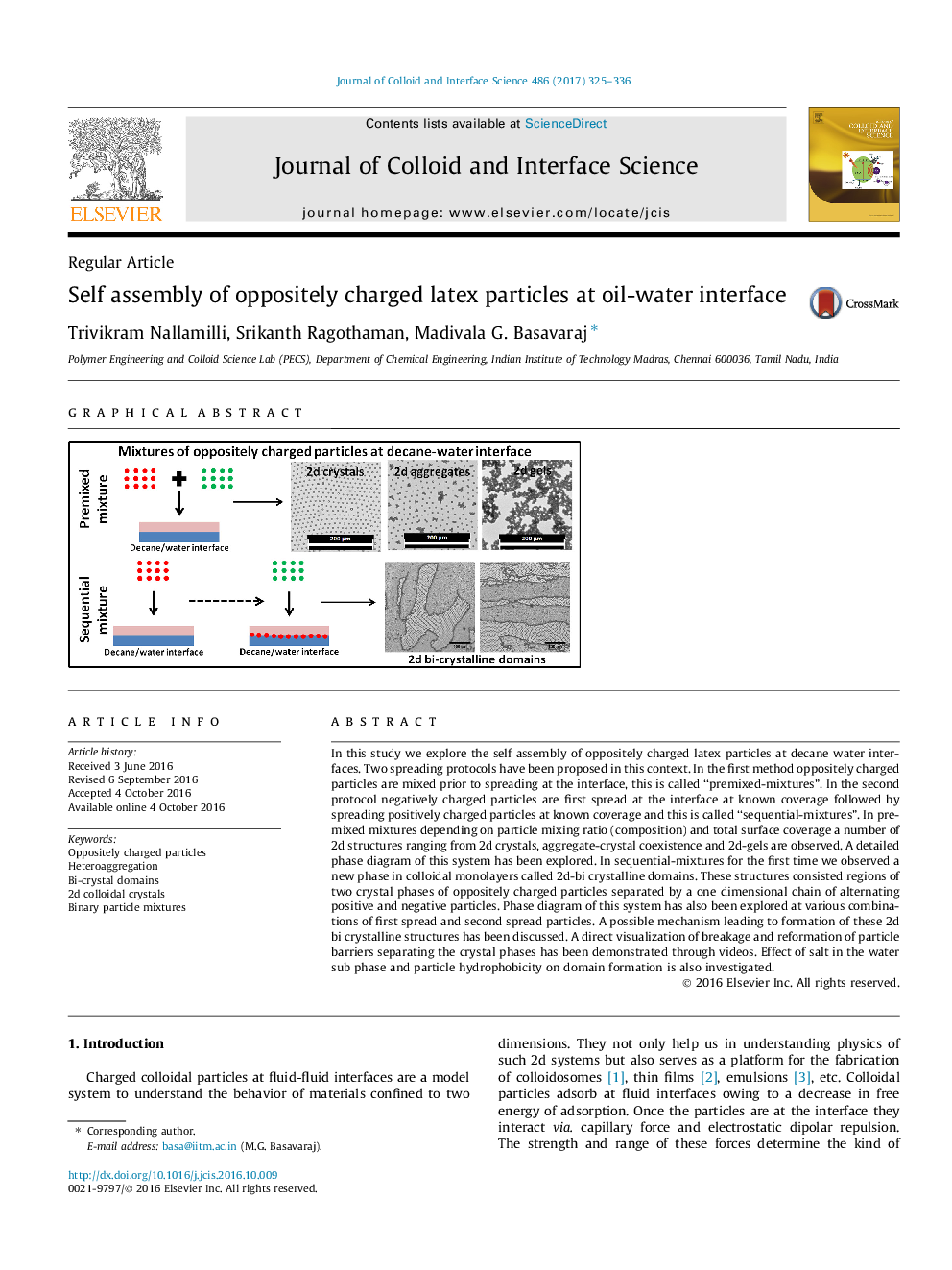| Article ID | Journal | Published Year | Pages | File Type |
|---|---|---|---|---|
| 4985496 | Journal of Colloid and Interface Science | 2017 | 12 Pages |
In this study we explore the self assembly of oppositely charged latex particles at decane water interfaces. Two spreading protocols have been proposed in this context. In the first method oppositely charged particles are mixed prior to spreading at the interface, this is called “premixed-mixtures”. In the second protocol negatively charged particles are first spread at the interface at known coverage followed by spreading positively charged particles at known coverage and this is called “sequential-mixtures”. In premixed mixtures depending on particle mixing ratio (composition) and total surface coverage a number of 2d structures ranging from 2d crystals, aggregate-crystal coexistence and 2d-gels are observed. A detailed phase diagram of this system has been explored. In sequential-mixtures for the first time we observed a new phase in colloidal monolayers called 2d-bi crystalline domains. These structures consisted regions of two crystal phases of oppositely charged particles separated by a one dimensional chain of alternating positive and negative particles. Phase diagram of this system has also been explored at various combinations of first spread and second spread particles. A possible mechanism leading to formation of these 2d bi crystalline structures has been discussed. A direct visualization of breakage and reformation of particle barriers separating the crystal phases has been demonstrated through videos. Effect of salt in the water sub phase and particle hydrophobicity on domain formation is also investigated.
Graphical abstractDownload high-res image (81KB)Download full-size image
